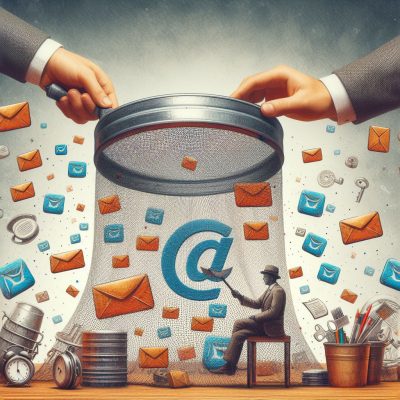7 Ways to Increase Sales Using Your Ecommerce Thank You Page
August 3, 2017
“Thank you!”
It’s one of the first “magic phrases” our parents teach us when we’re learning how to talk. It’s a simple way to show gratitude and nurture social relationships.
Yet so many post-purchase ecommerce checkout thank you page examples have that “don’t-let-the-door-hit-you-on-the-way-out” feel to them. Some companies barely even remember to post an order number, or say they’re sending an email confirmation. Some even forget say the magic words at all.
You must do better.
Your customers are being tugged, pulled and yelled at from all different directions, on all of their devices, all day long. Every day, they see, “Click here!”, “Download this!” and those passive aggressive signups where if you click no, they say something like, “No thanks, I don’t want fabulous hair.” People are exhausted.
To stand out in the middle of the cacophony, you must delight your customer before, during and after any sale. Make working with you a pleasure, not a chore. Make things easy for them, even on the thank you page so your customers want to:
- Tell all their friends and
- Come back soon.
The following 7 tips can help you make that happen:
1. Ecommerce Thank You Page Basic Best Practices
Even the most basic thank you pages require certain elements. First: “Thank you for your order!” Include an order confirmation code and a notification that they’ll receive their receipt via email shortly. Include details on whom to contact if there is a problem. In addition to these best practices, consider adding some of these…
2. A Thank You Discount

These are great because they tie into another concept we blogged about recently: loss aversion. By including a thank you coupon for some percentage off of a future purchase within the next few weeks, you give your customer two things:
- A very concrete sense of appreciation
- A welcome discount on something else they might have wanted but decided they couldn’t afford at that moment. Your “thank you discount” may help them over that problem.
Loss aversion—the gut instinct that losing something you already have is worse than gaining something extra—kicks in with this discount because it’s something you’ve just given them. They have it now. And it would hurt them, psychologically, to lose that by not coming using it on another purchase. Some ways to use this tactic:
- Dangle the carrot of a bigger discount if they refer 5 friends to your store. If your customer was so happy that they’re willing to trust you with their friends, chances are those friends might be great leads.
- Put a time limit on the discount code. This will increase their loss-aversion, making it urgent to come back and purchase something sooner rather than later.
- Invite them to sign up for your email newsletter and throw in a nice discount for giving you that permission.
3. Up-sell or Cross-sell Products
Invite them to continue shopping, even after they’ve made their purchase. If you’ve included a discount code, they may go straight back and purchase something they looked at previously. Make it easy for them by having a “Continue shopping…” or “Often purchased with your [insert product name here]…” header with images of the products they were looking at, linking them directly to that product page.
There are two very important things to remember when up-selling or cross-selling from the ecommerce thank you page:
- Make sure that the links are for products the customer spent time looking at previously.
- Suggest products that are directly related to, or would enhance the enjoyment of the product they just purchased.
Throwing random product images up on the thank you page clutters the customer’s experience and is unlikely to lead to more purchases. Pay close attention to data about how customers’ peruse your site.
4. Testimonials

Well-placed testimonials are a great item to add to your ecommerce thank you page. They build trust and confidence in your company that helps boost that relationship you are trying to foster with your new and returning customers. Testimonials can do wonders for your CLV, or customer lifetime value.
5. Surveys
Your ecommerce thank you page could be a great place to further interact with your customer by inviting them to take a short survey (5-10 questions max) about their experience on your website. You could even attach a discount code to increase participation. Customers like to be able to express their opinions, and these surveys can give you a wealth of insight. You can really never have enough customer data, so consider incorporating this into your thank you page, or somewhere in your ecommerce marketing strategy.
6. Link to Useful Content
We’ve said it before, and we’ll say it again: You’re building a relationship with your customers. And while building that relationship, you need to bring value to the table for them. Here are a couple of potential examples, but use your own knowledge of your products and customers to come up with useful content for them:
- If they just purchased a digital camera from you, the thank you page could have a link to a “tips and tricks” page that helps them get the most out of their new camera. If there are other product suggestions in that post, great.
- If they just purchased hiking equipment, post a link to the best hikes in their general area, or other unexpected tips for having a great hike.
As you can see, this list of useful content links could go on and on, depending on your products, services and customer needs. Being a useful resource, even on the thank you page, can foster those important customer relationships, establish you as a subject matter expert and bring your customers back again and again for advice, purchases and fun.
7. Make Sharing Easy
Amazon’s thank you page always presents Facebook, Twitter and Email sharing options on the right side of the screen. If the customer is excited about what they just bought from you, they can immediately, with just one click, share about the product they bought and that they bought it from you. Their friends may have similar interests and might also find your offerings enticing. Plus the extra endorsement from a social media share of a friend lends you a very important trust boost.
One Last Thing: Keep It Simple
We do not recommend cluttering your thank you page or your customer’s minds by using all of these tips at the same time. Run A/B testing on your thank you page for each of the suggestions that you find most applicable. Then see what works best with your customers and what most enhances your relationships and ROI. You can phase out what doesn’t work for you while enhancing what does so that your customers feel even more satisfaction with each interaction you have.
Thank you for taking the time to read this article—we hope it’s helpful! For more tips on how to boost your checkout rates and delight your customers, try out our e-book series or run the numbers on our ROI calculator. Or just contact us to talk with a real person about boosting your conversion rate and keeping your customers happy.





